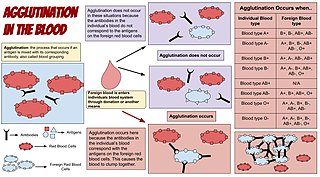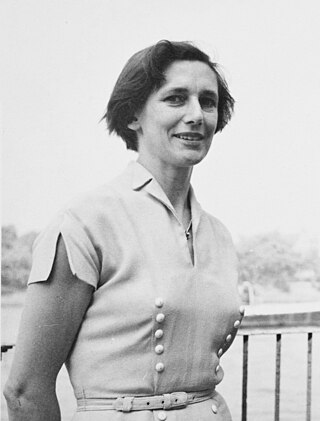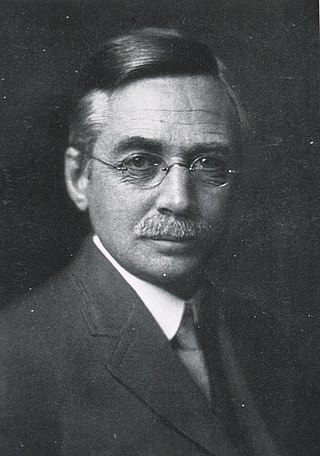Related Research Articles

A blood type is a classification of blood, based on the presence and absence of antibodies and inherited antigenic substances on the surface of red blood cells (RBCs). These antigens may be proteins, carbohydrates, glycoproteins, or glycolipids, depending on the blood group system. Some of these antigens are also present on the surface of other types of cells of various tissues. Several of these red blood cell surface antigens can stem from one allele and collectively form a blood group system.

Blood transfusion is the process of transferring blood products into a person's circulation intravenously. Transfusions are used for various medical conditions to replace lost components of the blood. Early transfusions used whole blood, but modern medical practice commonly uses only components of the blood, such as red blood cells, white blood cells, plasma, platelets, and other clotting factors.
Transfusion medicine is the branch of medicine that encompasses all aspects of the transfusion of blood and blood components including aspects related to hemovigilance. It includes issues of blood donation, immunohematology and other laboratory testing for transfusion-transmitted diseases, management and monitoring of clinical transfusion practices, patient blood management, therapeutic apheresis, stem cell collections, cellular therapy, and coagulation. Laboratory management and understanding of state and federal regulations related to blood products are also a large part of the field.

Blood plasma is a light amber-colored liquid component of blood in which blood cells are absent, but which contains proteins and other constituents of whole blood in suspension. It makes up about 55% of the body's total blood volume. It is the intravascular part of extracellular fluid. It is mostly water, and contains important dissolved proteins, glucose, clotting factors, electrolytes, hormones, carbon dioxide, and oxygen. It plays a vital role in an intravascular osmotic effect that keeps electrolyte concentration balanced and protects the body from infection and other blood-related disorders.

A blood bank is a center where blood gathered as a result of blood donation is stored and preserved for later use in blood transfusion. The term "blood bank" typically refers to a department of a hospital usually within a clinical pathology laboratory where the storage of blood product occurs and where pre-transfusion and blood compatibility testing is performed. However, it sometimes refers to a collection center, and some hospitals also perform collection. Blood banking includes tasks related to blood collection, processing, testing, separation, and storage.
Gordon Barraclough Parker AO is an Australian psychiatrist who is scientia professor of psychiatry at the University of New South Wales (UNSW).

Agglutination is the clumping of particles. The word agglutination comes from the Latin agglutinare.

Peter Erne Baume, AC is a retired Australian doctor and politician. He was a Senator for New South Wales from 1974 to 1991, representing the Liberal Party. He served as Minister for Aboriginal Affairs (1980–1982) and Minister for Education (1982–1983) in the Fraser government.

Karl Landsteiner was an Austrian American biologist, physician, and immunologist. He emigrated with his family to New York in 1923 at the age of 55 for professional opportunities, working for the Rockefeller Institute.

Ruth Ann Sanger was an Australian immunogeneticist, haematologist and serologist. She was known for her work on human red cell antigens and for the genetic mapping of the human X chromosome. She was Director of the Medical Research Council Blood Group Unit, of the Lister Institute of Preventive Medicine from 1973 to 1983.
Levon Michael Khachigian is an Australian medical research scientist notable for his work in vascular cell and molecular biology. He is a Professor in the Faculty of Medicine at the University of New South Wales.
George William Gregory Bird was a British medical doctor, academic, researcher and haematologist known for his expertise in the fields of blood transfusion and immunohaematology. He founded the Department of Transfusion Medicine at the Armed Forces Medical College, Pune and was inducted into their Hall of Fame in 2010. A winner of the Karl Landsteiner Memorial Prize and Morten Grove Rasmussen Memorial Award of the American Association of Blood Banks, Gregory Bird was honoured by the Government of India in 1963, with the award of Padma Shri, the fourth highest Indian civilian award for his services to the nation.
Fereydoun Ala is an Iranian physician and academician, specialised in internal medicine, haematology, blood transfusion and haemostasis, who established the first Clinical Haematology Department, and the first Haemophilia Centre in Iran at the Tehran University Medical Faculty. He was the founder of the Iranian National Blood Transfusion Service (INBTS), a centralised, state-funded organisation, established in 1974, for the recruitment of healthy, voluntary, non-remunerated blood donors.
Lucy Meredith Bryce was an Australian haematologist and medical researcher, who worked with the Australian Red Cross Society to establish the first blood transfusion service in Australia.
David Albert Cooper was an Australian HIV/AIDS researcher, immunologist, professor at the University of New South Wales, and the director of the Kirby Institute. He and Professor Ron Penny diagnosed the first case of HIV in Australia.

David Maurice Surrey Dane, MRCS CRCP MB Bchir MRCP MRCPath FRCPath FRCP was a pre-eminent British pathologist and clinical virologist known for his pioneering work in infectious diseases including poliomyelitis and the early investigations into the efficacy of a number of vaccines. He is particularly remembered for his strategic foresight in the field of blood transfusion microbiology, particularly in relation to diseases that are spread through blood transfusion.
Vlado Perkovic is an Australian renal physician and researcher who is the Provost at the University of New South Wales, Sydney, having previously been Dean of Medicine & Health at that University between 2019 and 2023.

Ludvig Hektoen was an American pathologist known for his work in the fields of pathology, microbiology and immunology. Hektoen was appointed to the National Academy of Sciences in 1918, and served as president of many professional societies, including the American Association of Immunologists in 1927 and the American Society for Microbiology in 1929. He was the founding editor of the Archives of Pathology and Laboratory Medicine in 1926 and edited several other medical journals. He was knighted to the Order of St. Olav in 1929, and in 1933, he became professor emeritus of pathology at the University of Chicago. The Hektoen Institute for Medical Research—formerly the John McCormick Institute of Infectious Diseases—now bears his name.
Joseph Kpakpo Acquaye, is a Ghanaian physician and academic. He is a clinical haematologist, and a professor of Haematology at the University of Ghana Medical School. Acquaye served as the head of the Haematology department of the University of Ghana Medical School from 1988 to 1990 and also 1994 to 2002, and was the president of the West African College of Physicians from 2003 to 2004. He has served as Director of the National Blood Transfusion Service and also Administrator of the Korle-Bu Teaching Hospital.
John Philip Chalmers is an Australian medical researcher, best known for his work in the field of cardiovascular physiology, specifically for his research into hypertension.
References
- 1 2 3 4 5 6 7 8 9 10 11 12 Crane, Helen Bashir (2012). "Robert John Walsh (1917–1983)". Australian Dictionary of Biography. National Centre of Biography, Australian National University. Retrieved 4 March 2024.
- 1 2 3 4 5 6 7 8 9 Courtice, F.C. "Robert John Walsh 1917-1983". www.science.org.au. Australian Academy of Science. Retrieved 5 March 2024. Originally published in Historical Records Australian Science, vol 6, no 2, 1985, p 277.
- 1 2 3 4 5 6 7 8 "Walsh, Robert John". www.sydney.edu.au. University of Sydney Faculty of Medicine Online Museum and Archive. Retrieved 4 March 2024.
- ↑ "Warships made the blood curdle". Sun. 1 July 1945. p. 4. Retrieved 9 March 2024– via Trove from the National Library of Australia.
- ↑ Issitt, Peter D.; Anstee, David J. (1998). Applied Blood Group Serology (4 ed.). Durham NC: Montgomery Scientific Publications. ISBN 9780935643053.
- 1 2 3 4 "Walsh, Robert John - Person - Encyclopedia of Australian Science and Innovation". www.eoas.info. Swinburne University of Technology - Centre for Transformative Innovation. Retrieved 4 March 2024.
- ↑ "Award extract: Professor Robert John WALSH, AO, OBE". honours.pmc.gov.au. Australian Government: Department of the Prime Minister and Cabinet. 14 June 1982. Retrieved 4 March 2024.
- ↑ "SYDNEY HOSPITAL DOCTORS TO MARRY". Daily Mirror. 8 March 1944. p. 2. Retrieved 9 March 2024– via Trove from the National Library of Australia.